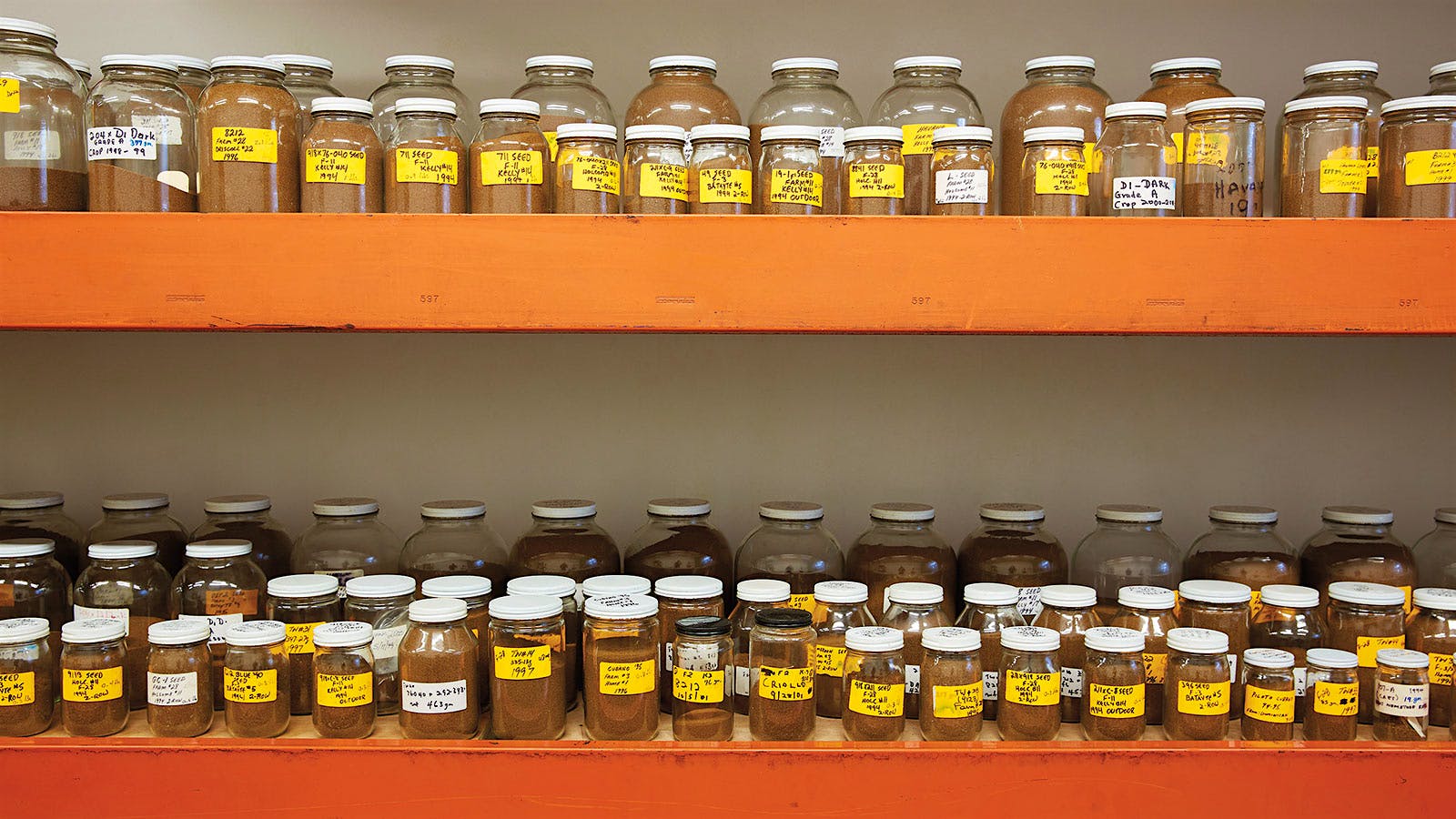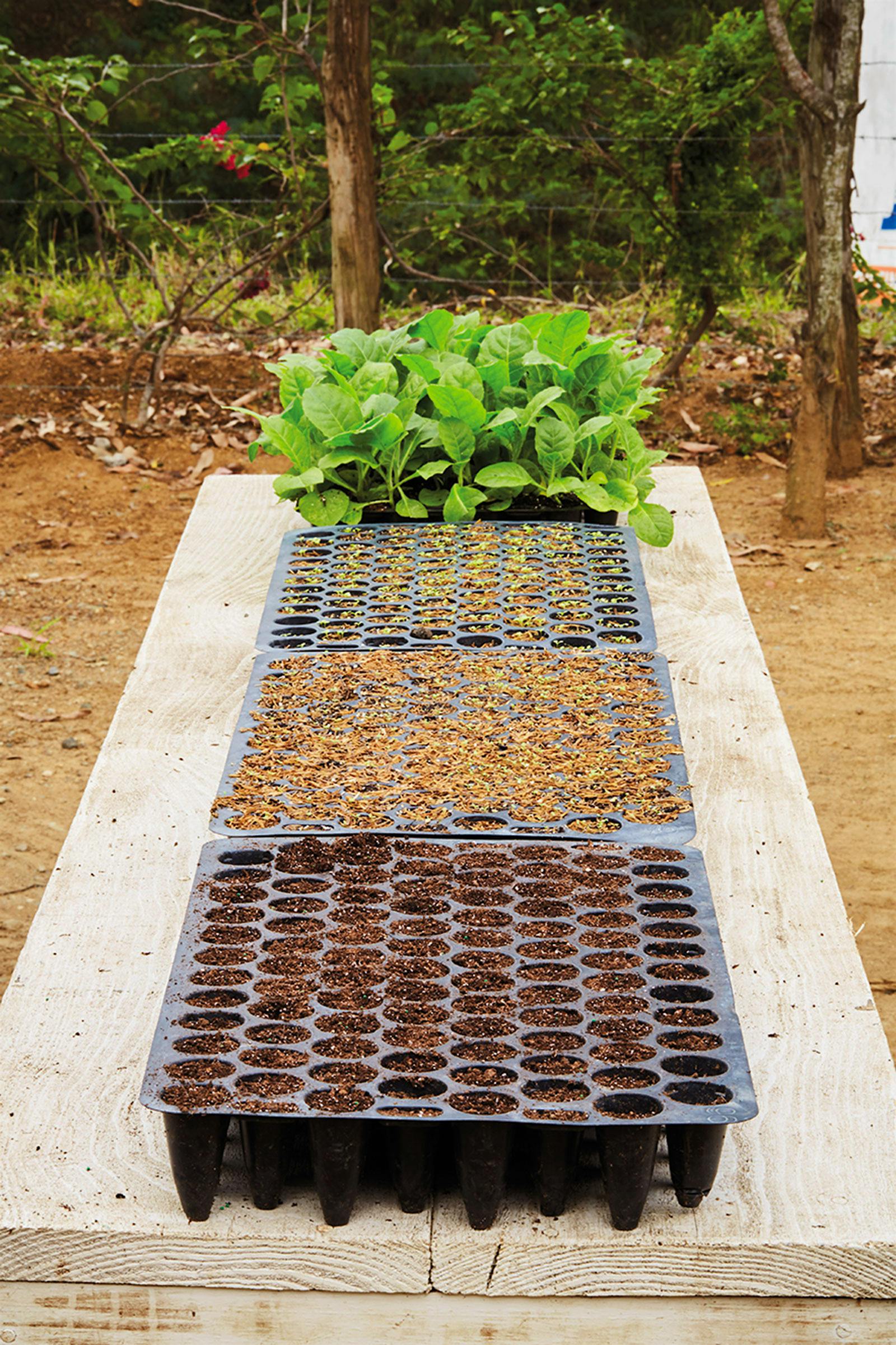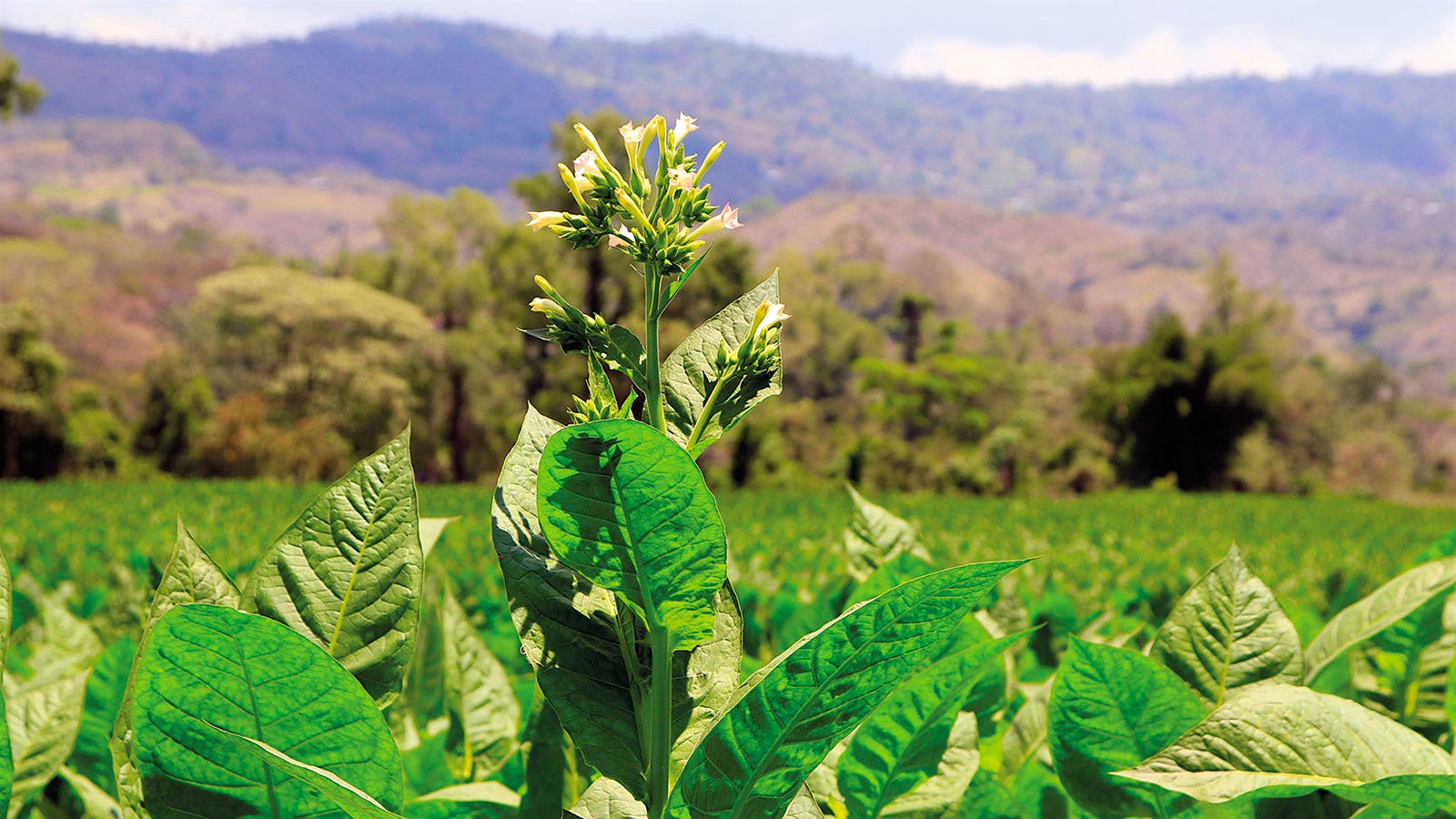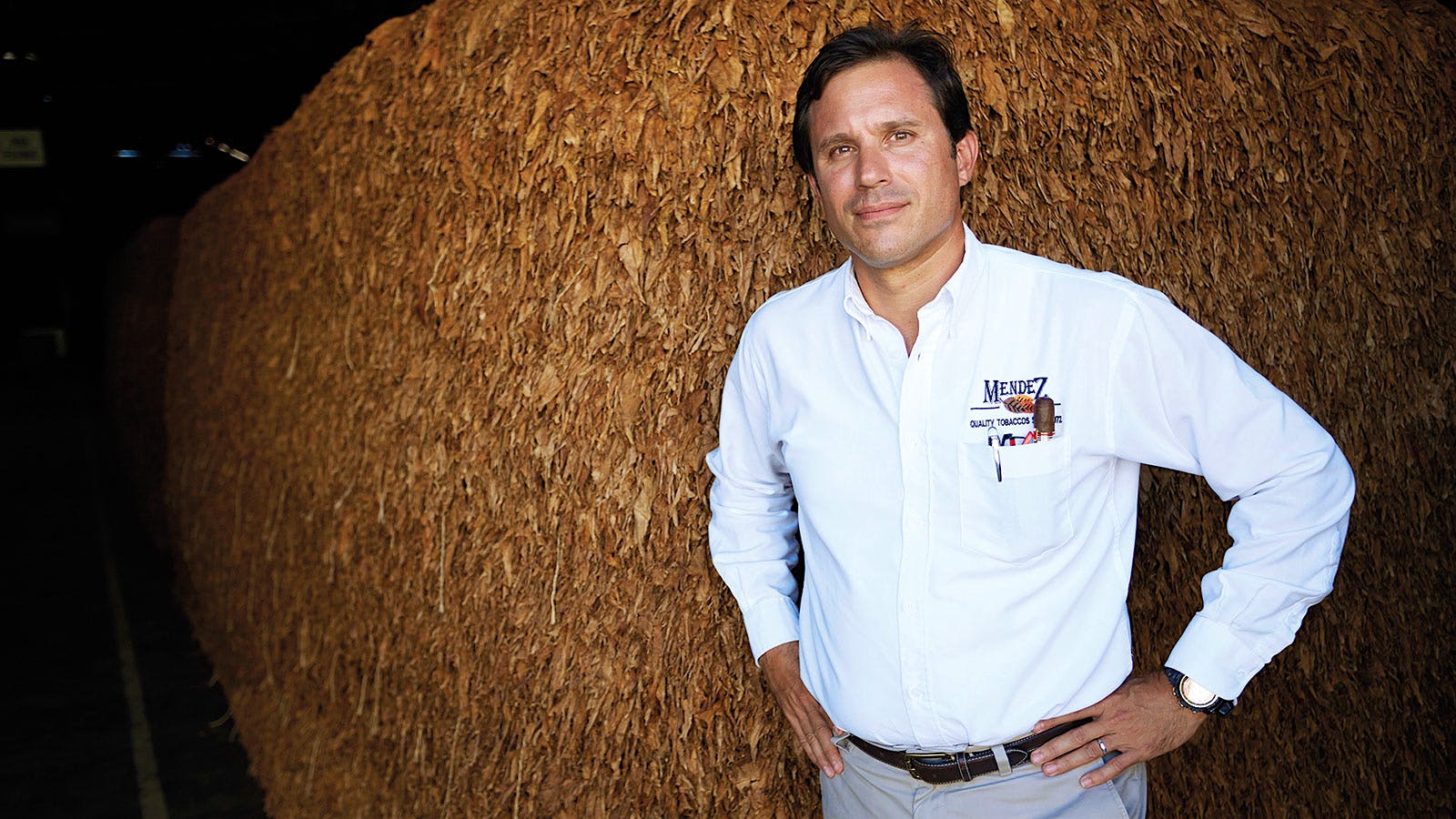Heirloom Seeds

Have you ever heard the cranky old-timers complain that the cigars they used to smoke tasted different? They’re not just waxing poetic about a bygone era. They’re actually correct. Cigar tobacco today certainly isn’t the same as it was 50 years ago. As time goes on, older strains of tobacco varietals have been replaced with newer strains that are more disease resistant, or yield more leaves per plant and more tobacco per acre. Once a new tobacco is deemed more robust or fruitful than its predecessor, the old seeds are retired, and with it, the old taste.
Some of those old tobaccos are probably gone forever, but today, a few of those old heirloom tobaccos are finding new life in the cigar market through careful, selective seed regeneration programs. Companies such as Altadis U.S.A., Plasencia, and General Cigar have gone into their seed archives and resurrected tobaccos that we haven’t smoked in as much as 50 years.
“What’s old is new again, that was the idea,” says Ernest Gocaj in an Albanian accent. He’s the director of tobacco procurement for General Cigar and instrumental in its seed regeneration program. Gocaj stands in a chilly, refrigerated room along with Jhonys Diaz, General’s vice president of operations in the Dominican Republic, and Francisco “Don Quico” Hernandez, general manager of tobacco growing and long filler processing. These are the heavyweights of General’s tobacco team, and they seem unbothered by the cold air. They’re far more interested in what’s in front of them: seeds. Shelves and shelves of jarred tobacco seeds.
This is the seed vault. To the average person, the room may look and feel like nothing more than a walk-in refrigerator, but to General Cigar, it’s the heart, heritage and history of the entire company.
The vault is fire proof, and protected by two sets of locked doors, one of them made of steel. It’s cloistered within General Cigar Dominicana, the large factory in Santiago that produces brands like Macanudo and Partagas. It’s kept at 39 degrees Fahrenheit, sometimes cooler but never warmer. At this temperature, a seed can last for decades, and that, of course, is the idea. The room contains heirloom seeds from long ago, current hybrids and experimental seeds. Altogether, there are enough seeds here to grow more than 250,000 acres of tobacco.
“In 2010, the market was pushing us to create something different and unique,” says Diaz. “We were always doing this type of R&D in the past, but 2010 is when there was a large effort to do something very creative.”
Being creative meant turning back the clock, trying to present the modern cigar smoker a chance to see how Macanudos or non-Cuban Partagas cigars used to taste. The company has resurrected some of its heirloom tobaccos, using them as the foundation for modern hybrids aimed at creating period-piece cigars for today’s smoker.
General’s seed library is vast, and each jar contains millions of seeds, all labeled rather unceremoniously with handwritten stickers, classified by seed type, farm and year. A jar of seed 911, codename “Moses 14,” for example, sits next to a jar of Havana 2000, codename “Tower 21.”
Tower? 911? It all seems rather ominous until Gocaj points to Moses.
“That’s an old seed. It was Senior’s favorite,” he explains, referring to the late Edgar Cullman Sr., former owner and patriarch of General Cigar. “It’s an old Connecticut seed and produces slightly darker leaves than normal Connecticut tobacco, but we couldn’t make it in commercial quantities. The yield was too low.”
The process of resurrecting an heirloom tobacco is long and expensive. General tried to bring back about 21 heirloom seeds, but most didn’t perform as well as hoped. For some seeds, the yield was far too low. For others, the tobacco’s original flavor profile and characteristics seemed to have been compromised in the growing process. Others still had leaves that did not grow to adequate size, and there were some that still proved too susceptible to the many diseases that can harm a tobacco plant.
General finally found success with two seeds from antiquity. They called the final seeds M01 and M02.
The M01 strain is based on a 50-year-old seed associated with the first non-Cuban Partagas cigars. Today, it has been reincarnated as the Partagas Ramon y Ramon brand, a line of cigars introduced last year. It was blended as a tribute to Ramón Cifuentes Toriello who carried the Partagas brand from Cuba to the Dominican Republic.
The M02 cultivar comes from the same seed type used on Macanudos from the 1960s. This resurrected tobacco can be found in a brand called Macanudo Mao, which is a limited edition that came out in 2016.
Here’s how they did it: First, the company went into its archives and found the heirloom Dominican seed from the 1960s, which it dubbed seed “M” (most likely for Macanudo). Then, it created a hybrid, cross-polinating the M seed with another old Connecticut seed called D3, which is a strain that resists black shank, a fungus that can rot the roots of a tobacco plant. After that, General continued to backcross the resulting seeds with the old “M” seeds in order to create a tobacco that inherited the disease resistance of D3 yet still retained the desired flavor and aroma characteristics of the original heirloom.
“The first and second years of cultivating this seed was very difficult because the plantings were dying,” recalls Gocaj. “They don’t all survive. You only collect the seeds from the plants that survive. Then you do the crossing again. After several crossings you get the disease resistance. Once the tobacco can resist black shank, you have to back cross it with the original seed again to achieve the flavor characteristics.”
Seems like farming 101, but it’s a long process of selection that took four years to complete. General grew plots of its experimental tobacco both in Connecticut and in the Mao region of the Dominican Republic in order to see which climate the tobacco preferred. It fared better in Mao.
“Climate imparts the flavor, but soil affects the texture and the thickness,” Gocaj says. “Backcrossing preserves the most desirable attributes while crossing gives the original seed new characteristics such as disease resistance.” So it required General to move forward and backward at the same time.
By 2013, the M01 and M02 tobaccos were agriculturally well established, but it took another few years to properly age and ferment these leaves. Once the tobacco was deemed smokable, General began to experiment with blends, using the special tobacco as part of a filler blend and supplementing with tobaccos that showcase the vintage varietals rather than overpower them. In the case of Partagas Ramon y Ramon, the M01 strain was complemented with Cameroon wrapper and Nicaraguan filler. For Macanudo, the vintage filler was fortified with leaves from Nicaragua and Colombia.
Other cigar companies are also taking a hard, new look at some very old seeds. Altadis U.S.A., makers of famous non-Cuban brands like Montecristo and Romeo y Julieta, has made an aggressive effort to keep its heritage brands modern and relevant, and part of that strategy involves a true heirloom product. Working in the Dominican Republic with their contract growing partner José Mendez & Co., they resurrected a seed from the 1960s called Pilotico, a tobacco that has been off the cigar market for more than three decades.
“These were the original seeds my grandfather had grown in the Dominican Republic in the 1960s and hadn’t been planted commercially for more than 30 years,” says Siegfried Maruschke of José Mendez & Co.
Pilotico is a derivative of the Piloto Cubano varietal, and seems to run counter to everything a farmer would want. Piloto Cubano is small to begin with, and Dominican farmers are often tempted to grow the more vibrant hybrid San Vicente, which grows more tobacco than Piloto. But Pilotico is even smaller than Piloto, producing a mere 14 leaves per plant as opposed to Piloto’s 18 leaves.
“The time it takes to regenerate a seed can vary from two to six years,” Maruschke explains. “In the Dominican Republic, we can only grow one crop in a year and that limits the amount of trials we can perform. It becomes a matter of knowing the current diseases that affect the plants of the seeds you want to regenerate.”
The regenerated Pilotico tobacco was grown in the Navarette region of the Dominican Republic and debuted commercially in 2015 as part of the filler blend for the limited-edition Montecristo 80th Anniversary cigar.
Seeing how only 40,000 of these anniversary Montecristos were produced, not many people got the opportunity to try the heirloom tobacco. Not at first, anyway. The next year, Pilotico became more available. Once José Mendez & Co. could produce the heirloom in commercial quantities, Altadis introduced the Montecristo Pilotico Pepe Mendez brand.
Altadis recently put out another brand with heirloom tobacco called Yargüera H. Upmann, and it contains a resurrected leaf from nearly 50 years ago.
“In 1960, Don Jorge Bueso Arias, founder of La Flor de Copan, brought a variety of seeds to Honduras directly from Cuba,” says Joel Alvarenga of Altadis U.S.A. He runs the company’s Honduran operations, which includes the Flor de Copan factory. Altadis wanted to bring back the taste of that old seed, naming it Yargüera 2013 after the estate where the leaf is cultivated, in the mountainous farmlands of northeast Honduras.
“It adapted to our soils and climate, thus reaching the desired, unique characteristics: sweet flavor and concentrated aroma,” he says.
In order to work with this particular heirloom seed, Altadis (which has seed vaults of its own) looked to its team of agronomists and decided to cross it with a strong Criollo ’98 seed, which was selected for its ability to resist disease, grow large leaves and produce bountiful yields. While it might be everything a tobacco grower wants in the fields, the end product still needs to taste and smell like the original specimen after barn-curing and fermentation.
“By doing this crossing, it was expected that we would obtain a variety with the best characteristics of both seeds, and therefore be able to offer the market novel blends with unique characteristics,” Alvarenga says.
As a commercially viable tobacco, the Yargüera hybrid took four years to develop, starting in 2009 and ending in 2013. After each seed crossing, the tobacco was smoked and analyzed.
“It’s a complex process that requires resources and expert smokers so that in each step, you can select the best plants and at the same time, smoke these tobaccos and find the ones with the best flavor and aroma,” Alvarenga explains.
Once the seed was established and the phenotype locked into the leaf, the Yargüera tobacco was fully cultivated. After curing and fermentation Altadis’ “Grupo de Maestros” got to work blending the tobacco and Yargüera was finally released as a brand last year.
But the word Yargüera on its own doesn’t really resonate with the average cigar smoker, so Altadis attached it to one of its heritage brands, H. Upmann. It made perfect sense—an heirloom tobacco for a heritage cigar. Yargüera H. Upmann was born, and with it, the marketing words “estate tobacco.”
Other cigarmakers have been using heirloom seeds for decades. Consider the Eiroa family, former owners of the Camacho brand, who claim to have the original Corojo seeds from the Rodriguez family from Cuba.
The Eiroas made the word “Corojo” a household name among American cigar smokers with their Camacho Corojo brand released in 1999, before it was sold to Oettinger Davidoff.
“Authentic Corojo seed disappeared from Cuba due to blue mold and low yield,” Christian Eiroa recalls. He no longer is part of Camacho, but he now has his own cigar company, CLE, that uses Corojo grown by his father Julio. “It was in 1997 when my father grew the first crop in Honduras. He had gotten the seed from Daniel Rodriguez himself who had been growing it in Nicaragua. His grandfather, Diego Rodriguez originated the seed in his farm, Santa Inez del Corojo.”
Corojo was a legendary leaf in Cuba, but the seed proved vulnerable to blue mold and was retired from Cuban production, eventually replaced by a more disease-resistant hybrid called Havana 2000, which was itself replaced by later seeds in a drive to grow tobacco that would fare better against disease. Eiroa is clear that he does not grow any of those newer hybrids, but has stayed faithful to the Corojo heirloom and uses it to this day for his Eiroa 20 years brand.
“For the first three years we were using the original seed as was handed to my father from Rodriguez,” Eiroa explains. “Nothing was done to those seeds. The germination rates were low,” he says. “After the fifth year we began to plant the seeds that were generated from the first crops of the original seeds.”
The Eiroa 20 Years Colorado is a perfect showcase for this heirloom tobacco, because the entire cigar, from filler to binder and wrapper, is made from Corojo seed. When grown in Honduras and aged properly, Eiroa believes the resulting tobacco is pungent and distinct.
“It’s a very rugged tobacco aroma, but with a hint of honey,” he explains. “The flavor is very old-fashioned and only a tad sweet.”
Another fickle Cuban heirloom seed is Pelo d’Oro. Translated to “golden hair,” this tobacco was first grown in Cuba back in the 1930s. It has always been prized not only for its excellent flavor and aroma, but for its uniform leaves and high percentage of wrapper—that is, when the plant didn’t die from disease. Despite Pelo d’Oro’s otherwise beautiful properties, it wasn’t particularly robust in the field, and highly vulnerable to the black shank disease.
A few Cuban farmers still grow it today but not in commercial quantities, so for all practical purposes, Pelo d’Oro is a retired seed.
While Cuba may no longer be interested in Pelo d’Oro, the whimsical tobacco has intrigued growers from other countries. Jaime Gracia of My Father Cigars has been growing it in Nicaragua since 2007. He started by planting Pelo d’Oro in Estelí, but now plants it in the Jalapa region as well.
“It is a very difficult seed” he says. “Very susceptible to disease, but it’s responded very well here due to the characteristics of the soil in Nicaragua.”
When he first started with Pelo d’Oro, Garcia planted only two manzanas (about three and a half acres) of the tobacco. Today, between both regions, he grows 20 manzanas (about 35 acres).
“Its aroma is strong and very pleasant which makes this seed very unique,” Garcia explains. “It’s sweet on the palate, but the ligeros are very strong.”
The Pelo d’Oro he grows comes from original seeds that have not been crossed with other varietals, so the resulting tobacco could be considered genetically Cuban with a Nicaraguan accent. Garcia doesn’t grow enough of it for any of his regular-production cigars, but his Pelo d’Oro can be found in small releases such as the Jaime Garcia Reserva Especial Limited Edition 2017 as well as the Garcia & Garcia brand.
The strange seed also piqued the curiosity of A.J. Fernandez, who produces around eight acres of Pelo d’Oro on a farm he calls San Diego, also in Nicaragua’s Estelí region.
“I grow the original seed but with lots of care because it’s extremely susceptible to disease,” he says. “For me, it has become a real challenge, but one I have embraced. Pelo d’Oro is very sweet and aromatic but also adds balance, which is one of the most important characteristics I try to implement in my blends.”
Right now, Fernandez’s Pelo d’Oro tobacco can be found in a contract brand he produces for Boutique Blends Cigars called Aging Room Small Batch Pelo de Oro.
“I’m also putting away some crops for a very special blend. A future AJ Fernandez brand,” Fernandez says.
Fans of broadleaf cigars may not realize that they are smoking an heirloom when they puff. Only in Connecticut, tobacco heirlooms are referred to as “foundation” tobaccos. Grown in the Connecticut River Valley, the foundation strains used today are referred to as C9 and C33 and are direct descendants of 50-year-old seeds.
Broadleaf tobacco as we know it didn’t arrive in the Connecticut River Valley until 1833, when B.P. Barbour of East Windsor planted a seed from Maryland that produced fatter, broader plants than the variety known as shoestring that was prevalent before. According to P.J. Anderson’s book Growing Tobacco in Connecticut, the new tobacco was so superior to the type previously grown that within a few years it entirely supplanted shoestring.
“I am not sure of anyone that has the original Barbour seeds,” says Nick Melillo, owner of Foundation Cigar Co., who relies on foundation broadleaf for his Tabernacle and Charter Oak brands. “There was also said to be some old sub-types called John Williams, Hockanum and Bantle. I’m not too familiar with these and I am not sure if they still exist. There is another old strain called Frank Roberts but I have only seen it in books and have never seen any farmers with it. But C9 and C33 are heirloom.”
In Nicaragua, the Plasencia family is looking to bring back some heirlooms of their own and examining some of Central America’s oldest seeds. The Plasencias are one of the largest growers of premium tobacco in Nicaragua.
“Our genetic department is working on regenerating the old seeds grown in Honduras, Nicaragua and Panama,” says Nestor Andrés Plasencia. “The old Nicaraguan seed is called Chicagre [a portmanteau of the words chilli, picante and agre], in Panama, the seed is Negro Panama. They happen to be very susceptible to disease.”
So far, he only has two out of three. Plasencia says that he hasn’t found the oldest Honduran seed yet, a forgotten tobacco called Copaneco. As for the seeds he does have, Plasencia is planting them in areas known to be infested with black shank. His agronomists collect the seeds from the tobacco plants that best resist the fungus and save them to produce a stronger generation of plants. It’s simple natural selection.
“The Negro Panama is strong and takes longer to ferment, but it has a great taste,” Plasencia says. “There are some studies that say the Nicaraguan seed dates back to the 1700s,” he adds. What Plasencia plans to do with these old tobaccos exactly is still up in the air. Perhaps he will sell it to a cigarmaker who wants something different. Or perhaps he will put it in one of his own brands.
Whether these companies truly succeed in faithfully recreating the taste of tobacco from 50 years ago doesn’t really matter. What’s important is that it’s something different. Unlike the cultivation of heirloom vegetables, heirloom tobacco isn’t necessarily about historical preservation, nor is it a revolt against genetically modified organisms. In the small world of premium tobacco, heirloom revival is simply about novelty and flavor.
Right now, the cigar industry is bogged down by the nagging demand for new products and new smoking experiences. For the time being, heirloom tobaccos might satisfy that need. If cigar-smokers get tired of the current crop of antiquated varietals, there’s always the next new, old seed.









